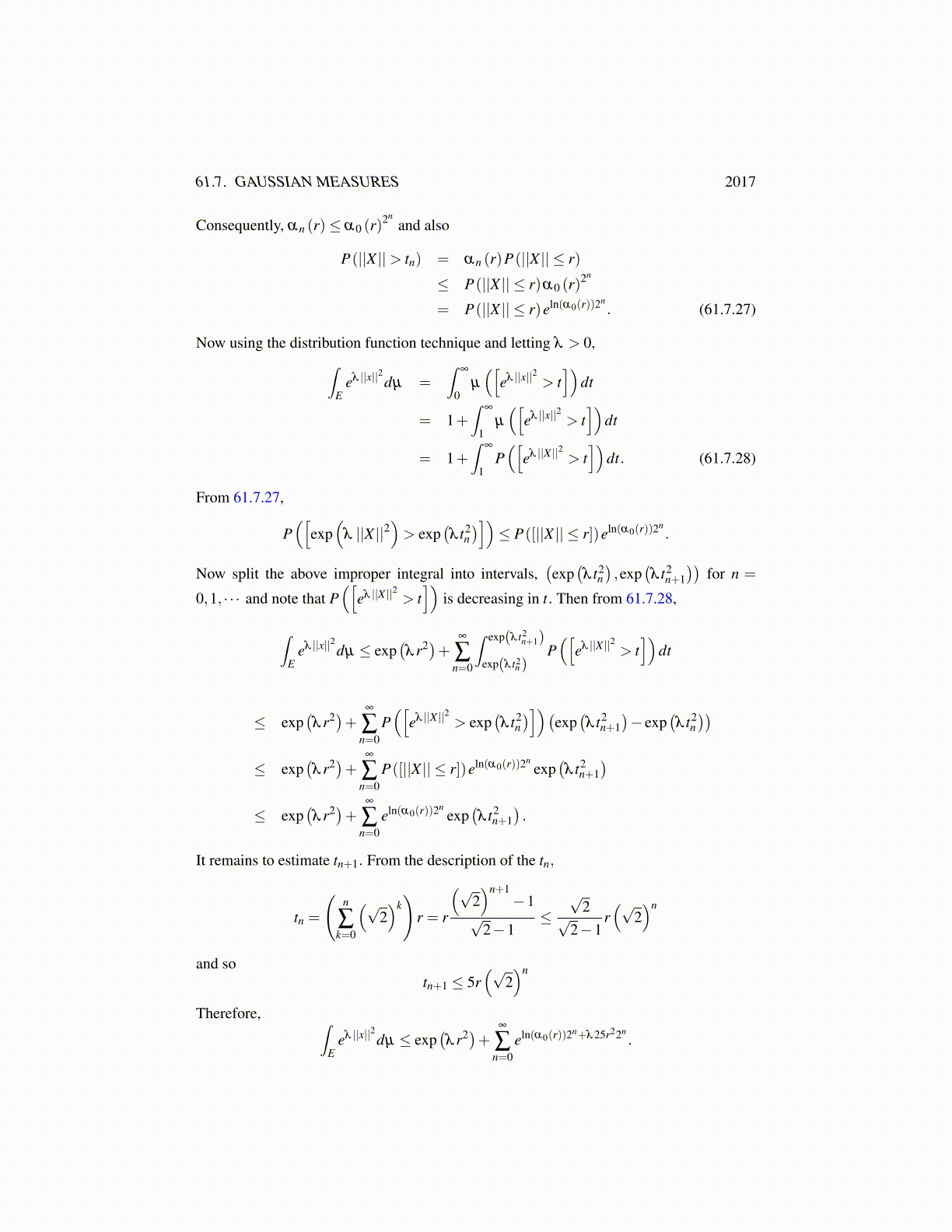
61.7. GAUSSIAN MEASURES 2017
Now since X and Y are independent,
E(
eith◦X ′)
= E(
eith(
1√2
)(X+Y )
)= E
(eith
(1√2
)X)
E(
eith(
1√2
)Y)
the product of two characteristic functions of two random variables, 1√2X and 1√
2Y. The
variance of these two random variables which are normally distributed with zero mean is12 σ2 and so
E(
eith◦X ′)= e−
12 (
12 σ2)e−
12 (
12 σ2) = e−
12 σ2
= E(
eith◦X).
Similar reasoning shows E(
eith◦Y ′)= E
(eith◦Y ) = E
(eith◦X) . Letting t = 1, this yields
61.7.26. This proves the lemma.With this preparation, here is an incredible theorem due to Fernique.
Theorem 61.7.5 Let µ be a symmetric Gaussian measure on B (E) where E is a realseparable Banach space. Then for λ sufficiently small and positive,∫
Eeλ ||x||2dµ < ∞.
More specifically, if λ and r are chosen such that
ln
µ ([x : ||x||> r])
µ
(B(0,r)
)+25λ r2 <−1,
then ∫E
eλ ||x||2dµ ≤ exp(λ r2)+ e2
e2−1.
Proof: Let X ,Y be independent random variables having values in E such that L (X) =L (Y ) = µ . Then by Lemma 61.7.4
1√2(X−Y ) ,
1√2(X +Y )
are also independent and have the same law. Now let 0≤ s≤ t and use independence of theabove random variables along with the fact they have the same law as X and Y to obtain
P(||X || ≤ s, ||Y ||> t) = P(||X || ≤ s)P(||Y ||> t)
= P(∣∣∣∣∣∣∣∣ 1√
2(X−Y )
∣∣∣∣∣∣∣∣≤ s)
P(∣∣∣∣∣∣∣∣ 1√
2(X +Y )
∣∣∣∣∣∣∣∣> t)
= P(∣∣∣∣∣∣∣∣ 1√
2(X−Y )
∣∣∣∣∣∣∣∣≤ s,∣∣∣∣∣∣∣∣ 1√
2(X +Y )
∣∣∣∣∣∣∣∣> t)
≤ P(
1√2|||X ||− ||Y ||| ≤ s,
1√2(||X ||+ ||Y ||)> t
).